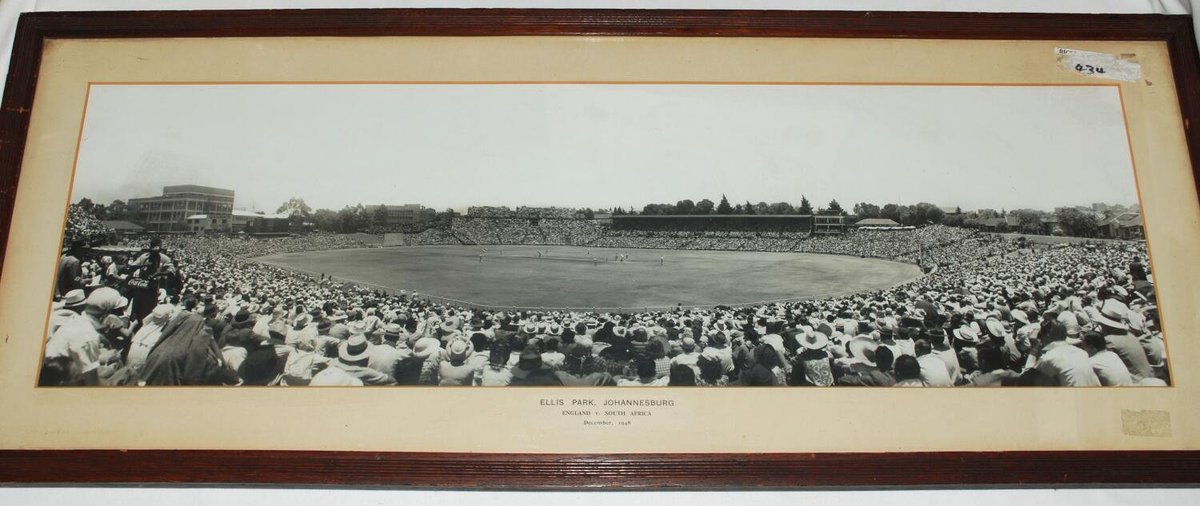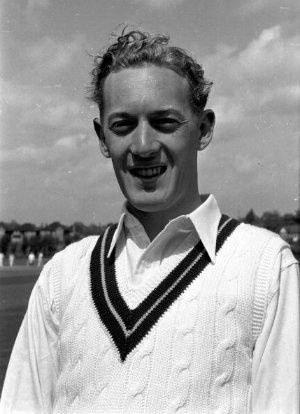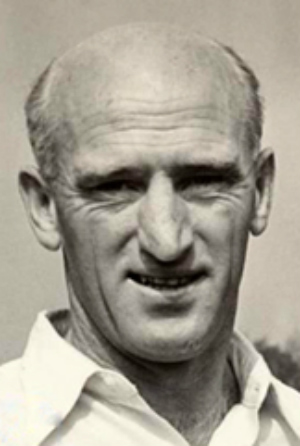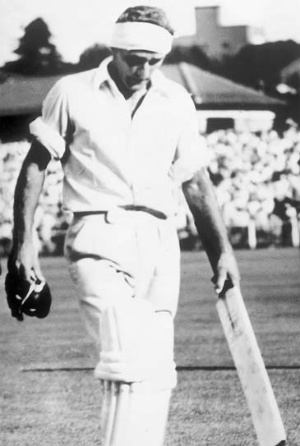The Boxing Day Test match is two days away, so I suppose it is better to tell the tale of the greatest Boxing Day cricket the world has ever seen.
That happened in 1953, at Ellis Park, Johannesburg (the photograph is from another match).
Warning:
+
That happened in 1953, at Ellis Park, Johannesburg (the photograph is from another match).
Warning:
+
I often get carried away even while reading this, let alone writing. There may be overdose of emotions.
First, as usual, some context.
Despite playing Test cricket for over two decades, New Zealand were yet to win their first Test match.
+
First, as usual, some context.
Despite playing Test cricket for over two decades, New Zealand were yet to win their first Test match.
+
Jack Cheetham, on the other hand, was turning South African cricket around.
They had drawn the 2-2 in Australia and had won 1-0 in New Zealand.
And they won the first Test of this series, at Durban, by an innings.
+
They had drawn the 2-2 in Australia and had won 1-0 in New Zealand.
And they won the first Test of this series, at Durban, by an innings.
+
The South African attack already consisted of swing bowler David Ironside, the untiring Anton Murray, Hugh Tayfield.
Arguably the greatest South African spinner, Tayfield still holds the record for the most consecutive dot balls in a Test (Bapu Nadkarni does not hold this).
+
Arguably the greatest South African spinner, Tayfield still holds the record for the most consecutive dot balls in a Test (Bapu Nadkarni does not hold this).
+
And in Durban, they had drafted in Neil Adcock.
Standing at six foot six and gifted with long arms, Adcock could make the ball take off even from a good length.
And he was quick.
The first South African to take 100 Test wickets, he would finish with a bowling average of 21.
+
Standing at six foot six and gifted with long arms, Adcock could make the ball take off even from a good length.
And he was quick.
The first South African to take 100 Test wickets, he would finish with a bowling average of 21.
+
Over to the Ellis Park Test match now.
South Africa finished Day 1 on 259/8.
The next day, Christmas, was a rest day. The cricketers were generally relaxed.
It was late night back home.
A train from Wellington to Auckland had just crossed Tangiwai.
+
South Africa finished Day 1 on 259/8.
The next day, Christmas, was a rest day. The cricketers were generally relaxed.
It was late night back home.
A train from Wellington to Auckland had just crossed Tangiwai.
+
The bridge on the River Whangaehu had lost one of its piers.
The crew was not aware of this.
Last-minute heroics from driver Charles Parker and fireman Lance Redman saved some lives.
But the locomotive, the tender, and five second-class carriages plunged into the river.
+
The crew was not aware of this.
Last-minute heroics from driver Charles Parker and fireman Lance Redman saved some lives.
But the locomotive, the tender, and five second-class carriages plunged into the river.
+
With a death toll of 151, the Tangiwai Disaster remains the worst rail accident in New Zealand history.
10.21 PM at Tangiwai. 12.21 PM in Johannesburg.
As the world celebrated Christmas, the shell-shocked New Zealand cricketers tuned in to the radio to find out more.
+
10.21 PM at Tangiwai. 12.21 PM in Johannesburg.
As the world celebrated Christmas, the shell-shocked New Zealand cricketers tuned in to the radio to find out more.
+
Among the dead was one Nerissa Love, fiancee of Bob Blair, who had bowled the first ball of this Test.
Blair, only 21, was disconsolate.
He confined himself to his hotel room, the radio tuned in, as his teammates left for the ground.
Manager John Kerr kept Blair company.
+
Blair, only 21, was disconsolate.
He confined himself to his hotel room, the radio tuned in, as his teammates left for the ground.
Manager John Kerr kept Blair company.
+
Flags were lowered half-mast as the match went underway.
The PA system announced that Blair would not return that day.
South Africa were bowled out for 271.
New Zealand captain Geoff Rabone called a meeting at the innings break.
+
The PA system announced that Blair would not return that day.
South Africa were bowled out for 271.
New Zealand captain Geoff Rabone called a meeting at the innings break.
+
I do not know what he told a group of anxious men keen to know about home and families in an era when international communication was in its nascent stage.
But let us return to the match.
And the pitch, which Bert Sutcliffe rated among the fastest he had batted on.
+
But let us return to the match.
And the pitch, which Bert Sutcliffe rated among the fastest he had batted on.
+
South Africa were bowled out for 271. Then Chetham threw the ball to Adcock.
The pitch obviously suited Adcock. He really let them fly that day on a strip with a green tinge.
Both Rabone and Murray Chapple were hit by balls that took off a good length.
+
The pitch obviously suited Adcock. He really let them fly that day on a strip with a green tinge.
Both Rabone and Murray Chapple were hit by balls that took off a good length.
+
Ironside, bowling a steady line, had Rabone caught in the slips. 5/1.
Then Adcock bounced at Chapple.
The ball brushed Chapple's glove, hit him on the chest, and fell on the stumps. 9/2.
Sutcliffe, the best batsman of the side, now joined Matt Poore.
+
Then Adcock bounced at Chapple.
The ball brushed Chapple's glove, hit him on the chest, and fell on the stumps. 9/2.
Sutcliffe, the best batsman of the side, now joined Matt Poore.
+
He played two balls safely.
The third came for his head. He went for the hook. The ball hit him on the side of the head.
His ear was split. Blood trickled down.
Sutcliffe "went out like a light".
Rabone rushed out, two men and a stretcher in tow.
+
The third came for his head. He went for the hook. The ball hit him on the side of the head.
His ear was split. Blood trickled down.
Sutcliffe "went out like a light".
Rabone rushed out, two men and a stretcher in tow.
+
But Sutcliffe stood up and walked back, even shook hands with Cheetham on his way out.
It was not Cheetham's fault, you see.
He was rushed to the hospital. He would later confess that he the blow affected him for the rest of his life.
Still 9/2.
But Adcock had just begun.
+
It was not Cheetham's fault, you see.
He was rushed to the hospital. He would later confess that he the blow affected him for the rest of his life.
Still 9/2.
But Adcock had just begun.
+
He now hit John R Reid all over the body before snaring him. 23/3.
Lawrie Miller managed a solitary run before Adcock hit him on the chest.
Miller coughed blood, and had to be taken to the hospital. 24/3.
Adcock now hit Poore on the chest. The ball ricocheted to the stumps.
+
Lawrie Miller managed a solitary run before Adcock hit him on the chest.
Miller coughed blood, and had to be taken to the hospital. 24/3.
Adcock now hit Poore on the chest. The ball ricocheted to the stumps.
+
35/4. With two batsmen in the hospital. And one in the hotel.
New Zealand needed another 86 to save the follow-on (the margin was 150).
Adcock now hit teenager John Beck on his groin. The box was inverted by the impact.
Jackie McGlew was fielding near Beck.
+
New Zealand needed another 86 to save the follow-on (the margin was 150).
Adcock now hit teenager John Beck on his groin. The box was inverted by the impact.
Jackie McGlew was fielding near Beck.
+
He put the box back into shape with the handle of Beck's bat.
Beck and Frank Mooney held on stubbornly, seeing the new ball off.
But Murray (career economy 1.79) and Tayfield (1.94) were almost impossible to score off.
Murray eventually had Beck caught behind. 57/5.
+
Beck and Frank Mooney held on stubbornly, seeing the new ball off.
But Murray (career economy 1.79) and Tayfield (1.94) were almost impossible to score off.
Murray eventually had Beck caught behind. 57/5.
+
New Zealand were going down... or were they?
Then, to the surprise of everyone, Miller strode out amidst loud applause from 23,000 people.
He had left the hospital against the doctor's advice.
Now he refused to concede an inch despite severe pain.
+
Then, to the surprise of everyone, Miller strode out amidst loud applause from 23,000 people.
He had left the hospital against the doctor's advice.
Now he refused to concede an inch despite severe pain.
+
Another blow on the heart could have been fatal.
But Mooney needed support, so he batted on. They added 24 before Ironside bowled Miller.
Miller's 14 was a brave effort, but not enough.
Another 40.
Tony MacGibbon and Guy Overton were not going to be enough.
And then...
+
But Mooney needed support, so he batted on. They added 24 before Ironside bowled Miller.
Miller's 14 was a brave effort, but not enough.
Another 40.
Tony MacGibbon and Guy Overton were not going to be enough.
And then...
+
A figure emerged from the tunnel, past the ropes, head wrapped entirely in bandage.
The doctors had spotted a lump the size of a fist behind Sutcliffe's left ear.
No fracture, said the X-rays, so they had simply dressed the torn earlobe.
He had seemed fine.
+
The doctors had spotted a lump the size of a fist behind Sutcliffe's left ear.
No fracture, said the X-rays, so they had simply dressed the torn earlobe.
He had seemed fine.
+
Then a doctor had poked at the lump, just to check.
Sutcliffe had fallen again, unconscious.
Even then, he was adamant when he came around.
He would bat, and that was that. Rabone had tried to stop him, only to be told:
+
Sutcliffe had fallen again, unconscious.
Even then, he was adamant when he came around.
He would bat, and that was that. Rabone had tried to stop him, only to be told:
+
"Have a look at the scoreboard. We're too many gone, for not enough."
And now he walked out, fortified by the bandage around his head and a substantial amount of scotch in his stomach.
It was a grotesque scene.
Blood oozed out of his ears as he walked.
+
And now he walked out, fortified by the bandage around his head and a substantial amount of scotch in his stomach.
It was a grotesque scene.
Blood oozed out of his ears as he walked.
+
Streaks of red appeared on his bandage as he approached the crease.
He looked white as a sheet.
A long innings was obviously ruled out.
Sutcliffe had already made up his mind to go after everything.
The third ball from Ironside landed in the stands.
+
He looked white as a sheet.
A long innings was obviously ruled out.
Sutcliffe had already made up his mind to go after everything.
The third ball from Ironside landed in the stands.
+
Two more came off Tayfield.
Mooney and Sutcliffe added 57 (first 50 in 39 minutes).
The follow-on was had been averted by the time Mooney fell to Ironside.
Sutcliffe had smashed four sixes over this period and had been dropped twice.
+
Mooney and Sutcliffe added 57 (first 50 in 39 minutes).
The follow-on was had been averted by the time Mooney fell to Ironside.
Sutcliffe had smashed four sixes over this period and had been dropped twice.
+
Both MacGibbon and Overton failed to score. New Zealand were bowled out for 154.
But were they?
Just when the players had started to walk back, Blair walked out.
Tears were rolling down his cheeks.
He had changed his mind back in the hotel. Kerr had summoned a taxi.
+
But were they?
Just when the players had started to walk back, Blair walked out.
Tears were rolling down his cheeks.
He had changed his mind back in the hotel. Kerr had summoned a taxi.
+
The crowd, cheering Ironside for his fifth wicket, was stunned in silence.
The New Zealand cricketers stood by the glass windows of the pavilion.
They were making no effort to hide their tears.
The South African fielders were barely in a better state.
Neither am I.
+
The New Zealand cricketers stood by the glass windows of the pavilion.
They were making no effort to hide their tears.
The South African fielders were barely in a better state.
Neither am I.
+
Sutcliffe put an arm around Blair: "C'mon son, this is no place for you. Let's swing the bat at the ball and get out of here."
On came Tayfield.
Sutcliffe sent the first two balls into the stands over the straight boundary.
The next ball passed without event.
+
On came Tayfield.
Sutcliffe sent the first two balls into the stands over the straight boundary.
The next ball passed without event.
+
The one after that was hit for another six.
These landed in The Cage, a narrow segment reserved for the coloured population.
The cheer was deafening.
But let us leave that for another thread. Or a book. Or ten. Or a library.
But let us return to the match.
+
These landed in The Cage, a narrow segment reserved for the coloured population.
The cheer was deafening.
But let us leave that for another thread. Or a book. Or ten. Or a library.
But let us return to the match.
+
Sutcliffe got a single off the fifth ball.
Blair ran a glove across his eyes.
Upset, yes. But defiant as well.
Blair sent the next ball over the mid-wicket fence, setting a new Test record for most runs in an over (25).
He defended the last two balls of the eight-ball over.
+
Blair ran a glove across his eyes.
Upset, yes. But defiant as well.
Blair sent the next ball over the mid-wicket fence, setting a new Test record for most runs in an over (25).
He defended the last two balls of the eight-ball over.
+
That six remained Blair's only scoring stroke of the innings. Tayfield eventually had him stumped.
The pair added 33 in 10 minutes before walking back back, arms around each other.
Sutcliffe remained unbeaten on an outrageous 112-minute 80 with 4 fours and 7 sixes.
+
The pair added 33 in 10 minutes before walking back back, arms around each other.
Sutcliffe remained unbeaten on an outrageous 112-minute 80 with 4 fours and 7 sixes.
+
New Zealand lost the match by 132 runs.
Chasing 233, they were in it at 75/3 before collapsing to 100 – but did it matter?
Let me quote Rand Daily Mail: "It is not the result of the match that will be best remembered when men come together to talk about cricket.
+
Chasing 233, they were in it at 75/3 before collapsing to 100 – but did it matter?
Let me quote Rand Daily Mail: "It is not the result of the match that will be best remembered when men come together to talk about cricket.
+
"They will speak of a match that was as much worth watching as it was worth playing, a match the New Zealanders decided must go on."
Yes.
I am not aware of a Boxing Day's cricket to match this day.
Do you?
+
Yes.
I am not aware of a Boxing Day's cricket to match this day.
Do you?
+
Before I end this, I must mention that there are at least three creations based on the day.
I have not got my hands on any of these, so I do not know whether they did justice.
+
I have not got my hands on any of these, so I do not know whether they did justice.
+
Book:
What Are You Doing Out Here: Heroism and Distress at a Cricket Test (2010), by Norman Harris. Blair wrote the foreword.
Stage play:
Second Test (2011). Jonny Brugh did a solo, playing Blair, Adcock, Nerissa Love, and New Zealand PM Sidney Holland, among other characters.
+
What Are You Doing Out Here: Heroism and Distress at a Cricket Test (2010), by Norman Harris. Blair wrote the foreword.
Stage play:
Second Test (2011). Jonny Brugh did a solo, playing Blair, Adcock, Nerissa Love, and New Zealand PM Sidney Holland, among other characters.
+
TV Movie:
Tangiwai – A Love Story (2011), by Charlie Haskell. Rose McIver as Nerissa Love, Ryan O'Kane as Blair, Dean O'Gorman as Sutcliffe, Jonny Brugh (who played the solo act mentioned above) as Reid, etc.
+
Tangiwai – A Love Story (2011), by Charlie Haskell. Rose McIver as Nerissa Love, Ryan O'Kane as Blair, Dean O'Gorman as Sutcliffe, Jonny Brugh (who played the solo act mentioned above) as Reid, etc.
+
Former New Zealand fast bowler Iain O'Brien played Adcock in the movie. Here is a still: https://twitter.com/iainobrien/status/287866030037028864
+
+
I hope someone uploads the movie. Or maybe not, for if it is bad, it may ruin everything for me.
It is bad, I guess. Blair said that they had taken "at least 50 per cent poetic licence."
These things always make me uneasy.
Here is the trailer:
It is bad, I guess. Blair said that they had taken "at least 50 per cent poetic licence."
These things always make me uneasy.
Here is the trailer:

 Read on Twitter
Read on Twitter






